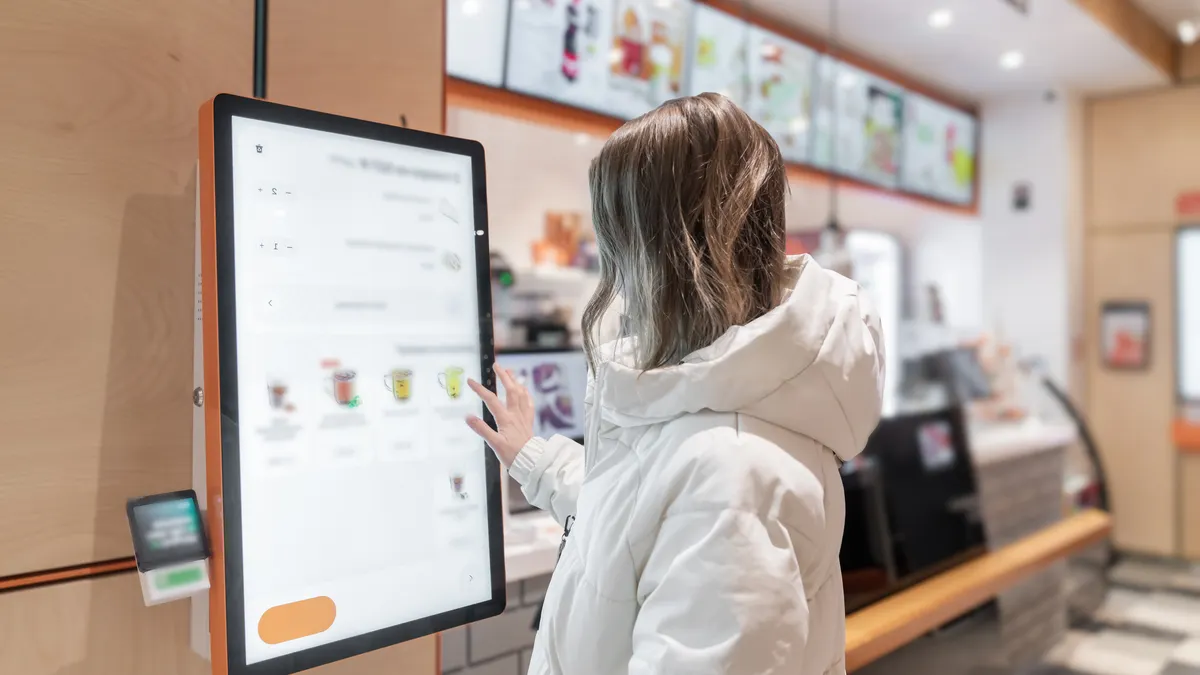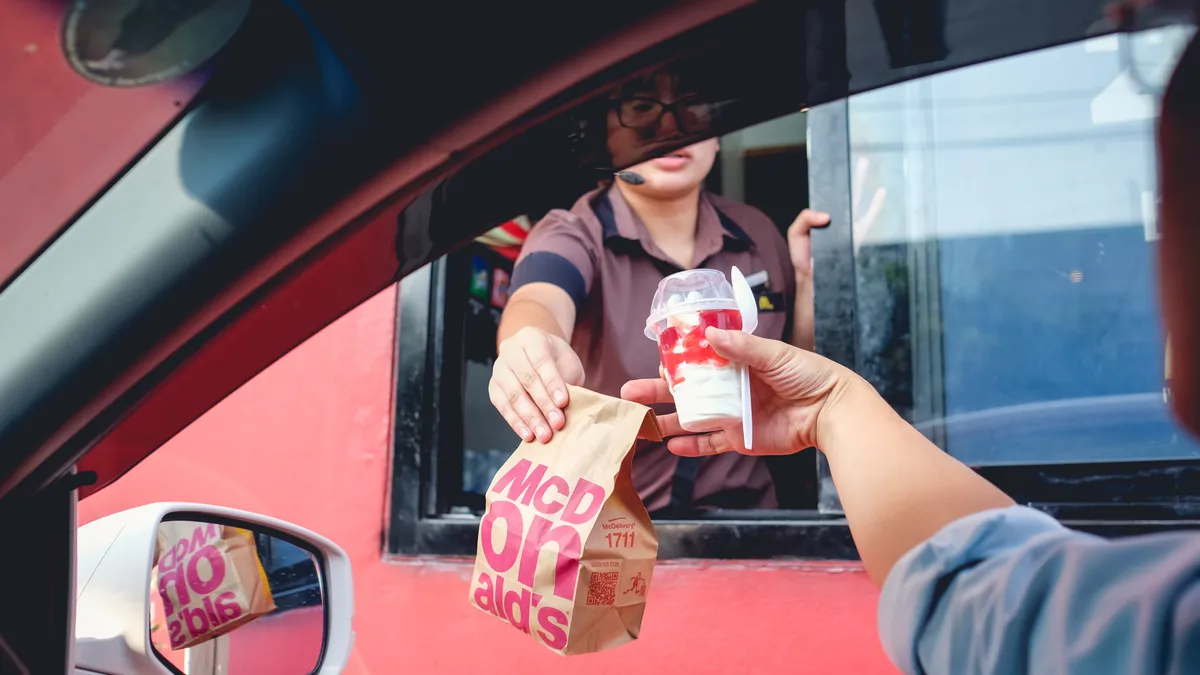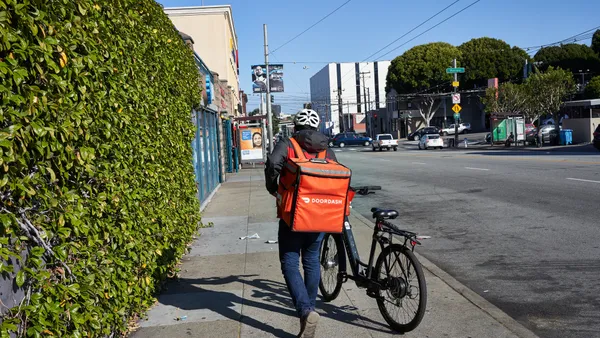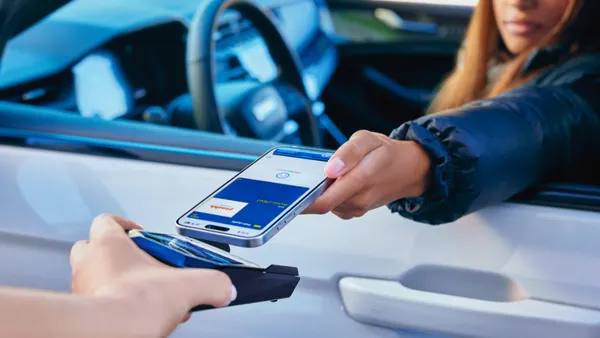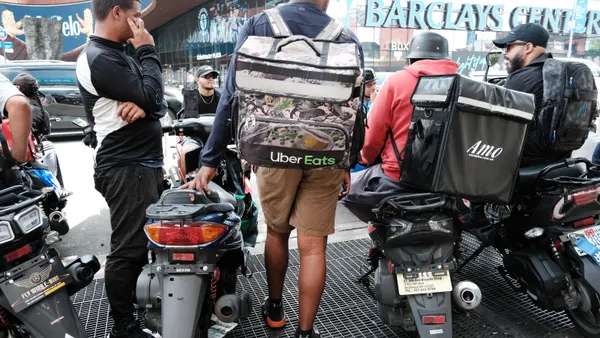If you've noticed something different going on at restaurants, you're not alone.
Restaurants of all kinds have undergone massive changes in the past few years, from the pandemic and its fallout through to the rise of food delivery services. With self-service kiosks and even AI-powered voice recognition, the race is on for food service operators of all kinds to modernize in a fast-changing market, with 60% looking for technology to enhance the customer experience.
Several business challenges drive that technology focus. One of them is service integration. For many, integration with third-party delivery services has become a necessity, not a choice, says Richard Newman, chief strategy officer at Acumera.
"Most restaurant operators have discovered they want to provide integration and delivery services, not just to make the additional money that those bring in, but because their loyal customers want it," he says.
Another challenge is labor shortages driving automation and AI adoption. Leisure and hospitality has the highest quit rate in the economy, at 4.1%.
Meeting these challenges means driving higher-quality customer experiences in front-of-house, along with greater efficiency and productivity in the kitchen. It calls for investments in a range of areas, from kitchen display systems and management software through computer vision for order accuracy, to automated inventory systems.
Complexity is the cost
These technology investments are difficult under the best conditions, let alone for food services outlets. They're typically low-margin businesses, making volume and scale especially important. They don't always have the time, money, or strategic vision to handle technology procurement cohesively. That leads to operational burdens, including more truck rolls, siloed software that doesn't play well together, and site-level troubleshooting headaches.
Third-party food service integration is a perfect example, says Newman. "If you look behind the counter at some of these restaurants, particularly smaller chains or individual operators, you'll see three or four different tablets, each dropped off by a different food service," he says. "That's a nightmare for the store restaurant staff to manage."
Restaurants must also contend with network reliability challenges that can affect revenue-generating systems. POS or kitchen management system downtime during peak hours can directly impact customer satisfaction and revenue.
Things only get harder as restaurants add more locations. They must then manage their hardware lifecycle across more sites.
Serving up a smarter network
Edge computing is changing what's possible, says Newman, especially as technology services become more cohesive. Unified edge platforms such as Acumera's enable restaurants to manage their entire on-site technology stack in one easy package.
A big part of this involves swapping out appliance-based infrastructure for software-defined networking. The former uses a single piece of equipment for each network function, such as a firewall. Software-defined networking moves all of these functions into software, known as virtualized network functions, that run on generic hardware, much like operating systems and applications run on a PC.
With everything from point-of-sale systems to kitchen management software and even security cameras running locally on an edge appliance, a restaurant’s computing functionality is all in one place. Backups to the cloud and security controls can be automated to protect your data, and if anything happens to the device itself, another can be running, ready to take over, avoiding any disruption. You can simply point your browser to the backup system and continue business. That means no more revenue loss from downtime during your busiest periods.
It also means that your connectivity and security infrastructure have the latest performance and functionality enhancements, ensuring that your network is reliable as it scales with your business.
Simple setup
These appliances and the software they run are easy to set up, says Newman. "You might be scanning a QR code or entering a system serial number, but the rest of it is automated," he says. This concept, known as zero-touch provisioning, makes it easy for new food service outlets to set up their tech stack and begin operating.
That makes it easier to patch and upgrade the network functionality using simple remote software management, or to replace it altogether with alternative VNFs. In many cases, which still persist today, restaurant chains would have to roll trucks to manually update hardware and software running network functions and applications. That took time, lots of mileage, and disruption across hundreds or thousands of locations.
Measuring the possibilities
What will restaurants be able to do as they join this revolution? Newman describes a future where point-of-sale virtualization enables centralized management across multiple outlets, and where tight integration with kitchen display systems improves order accuracy. He is also excited about the possibilities of AI.
"We've started to see early experimentation and tests with computer vision applications that track kitchen production, and are able to flag an issue when it happens," he says. Imagine, for example, a computer vision system that spots someone using a bread roll from the wrong bin for a gluten-free order and alerts production staff.
Other enhancements could boost revenue, such as personalized customer experiences through data analytics, or dynamic pricing based on customer behavior.
Managing restaurant tech should feel like building a better future for your business, not like putting out fires. If your restaurant chain isn't investing in infrastructure built for agility and scale, it's investing in obsolescence

